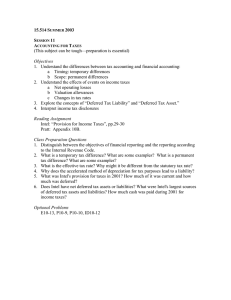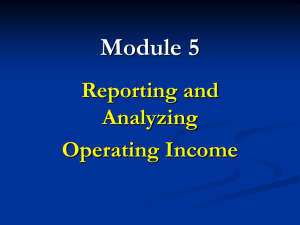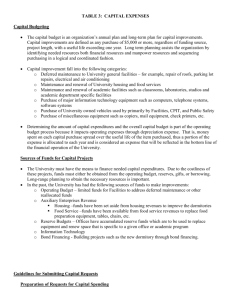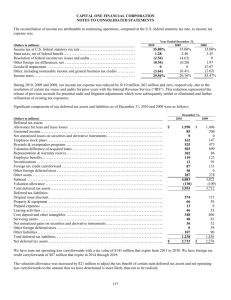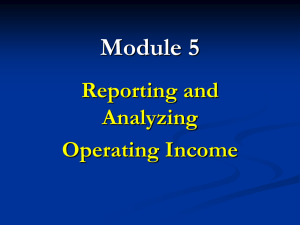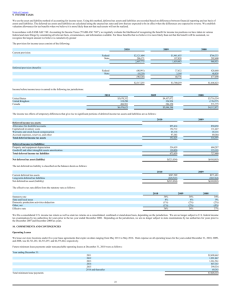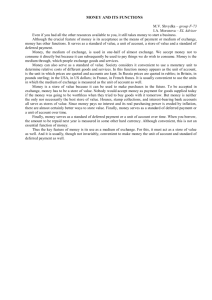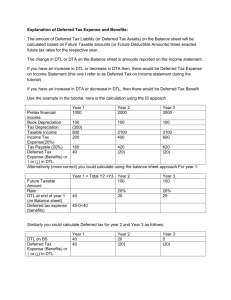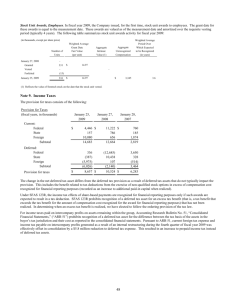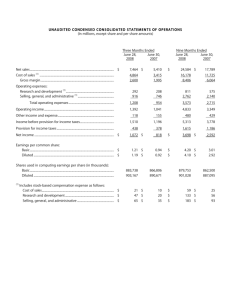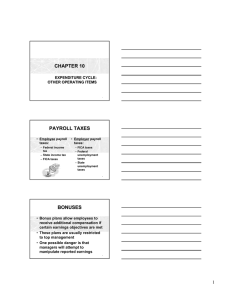11-28-12 Basics of the liability method
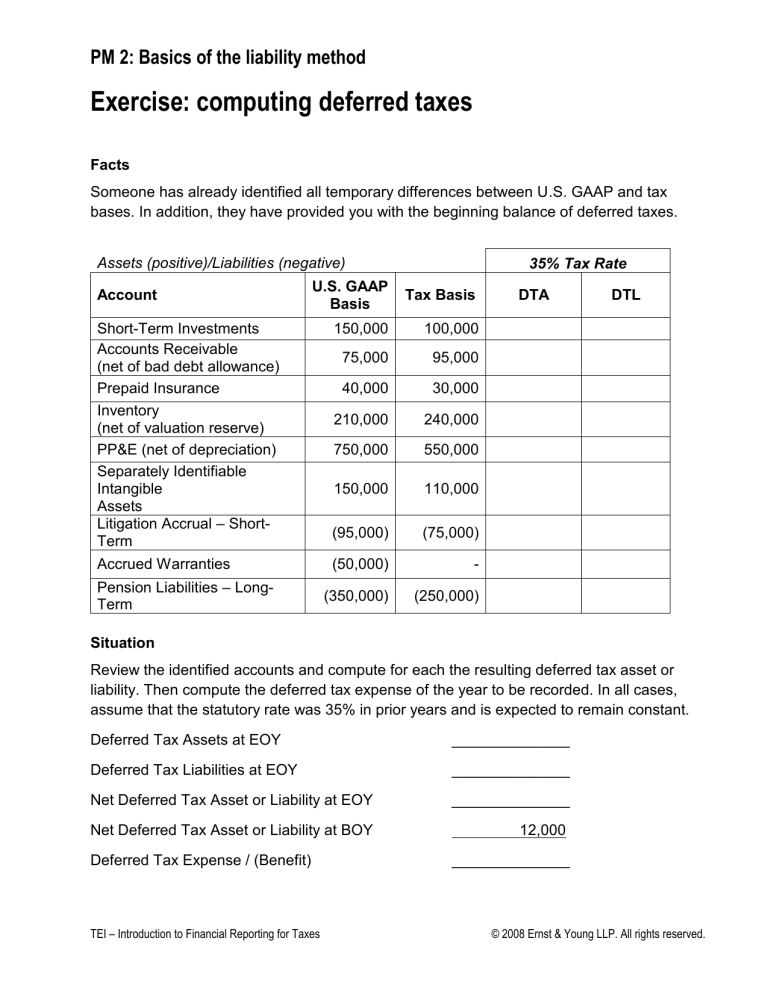
PM 2: Basics of the liability method
Exercise: computing deferred taxes
Facts
Someone has already identified all temporary differences between U.S. GAAP and tax bases. In addition, they have provided you with the beginning balance of deferred taxes.
Assets (positive)/Liabilities (negative)
Account
U.S. GAAP
Basis
Short-Term Investments
Accounts Receivable
(net of bad debt allowance)
Prepaid Insurance
Inventory
(net of valuation reserve)
PP&E (net of depreciation)
Separately Identifiable
Intangible
Assets
Litigation Accrual – Short-
Term
Accrued Warranties
Pension Liabilities
– Long-
Term
150,000
75,000
40,000
210,000
750,000
150,000
(95,000)
(50,000)
(350,000)
Tax Basis
100,000
95,000
30,000
240,000
550,000
110,000
(75,000)
-
(250,000)
35% Tax Rate
DTA DTL
Situation
Review the identified accounts and compute for each the resulting deferred tax asset or liability. Then compute the deferred tax expense of the year to be recorded. In all cases, assume that the statutory rate was 35% in prior years and is expected to remain constant.
Deferred Tax Assets at EOY ______________
Deferred Tax Liabilities at EOY ______________
Net Deferred Tax Asset or Liability at EOY ______________
Net Deferred Tax Asset or Liability at BOY 12,000
Deferred Tax Expense / (Benefit) ______________
TEI – Introduction to Financial Reporting for Taxes © 2008 Ernst & Young LLP. All rights reserved.
